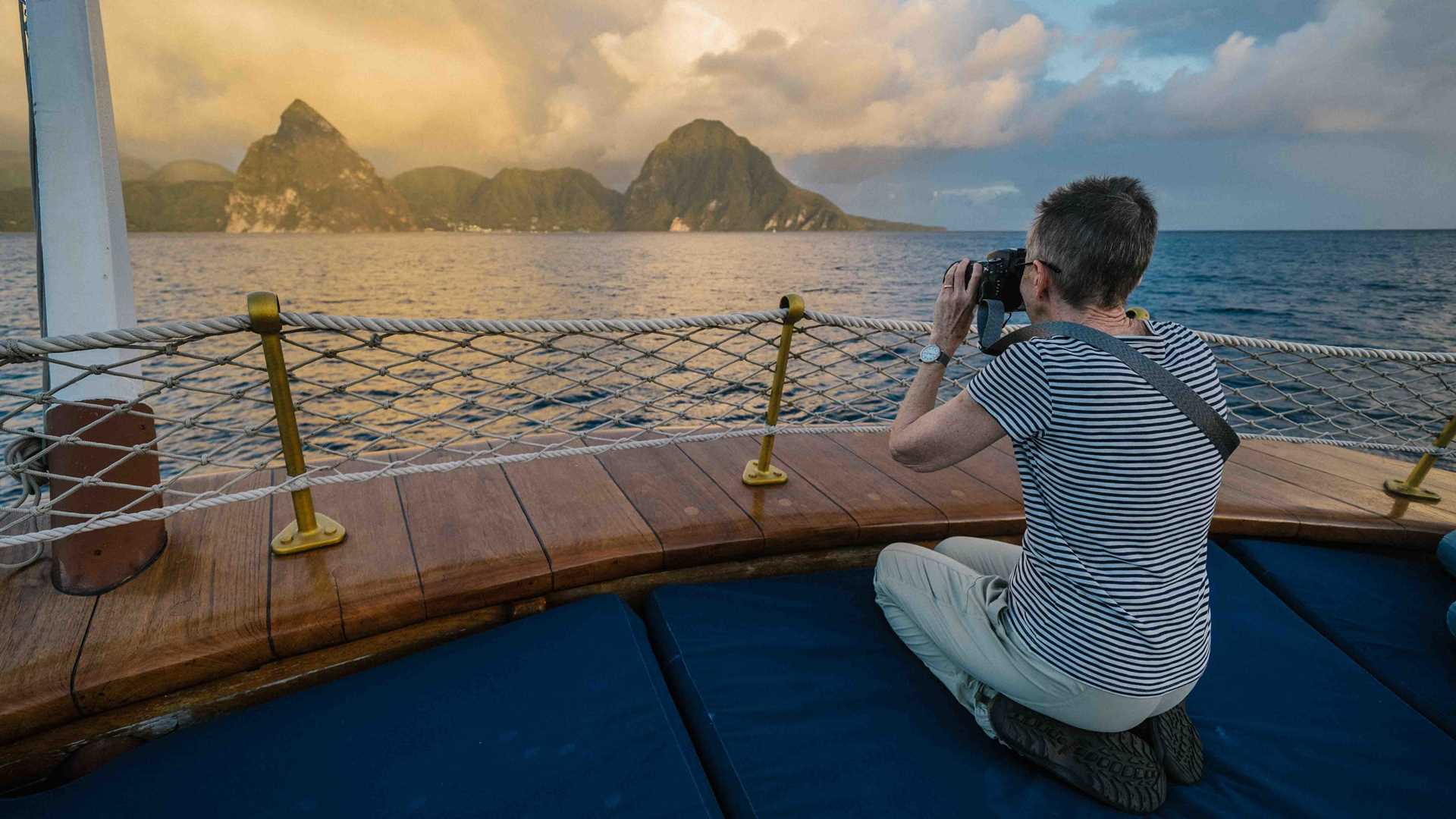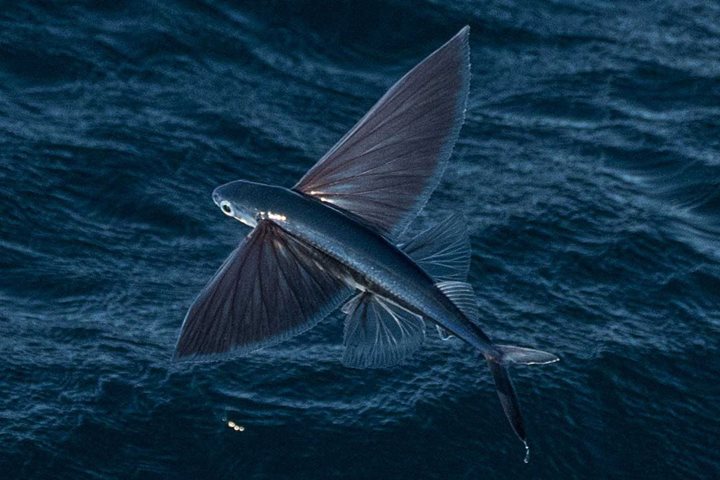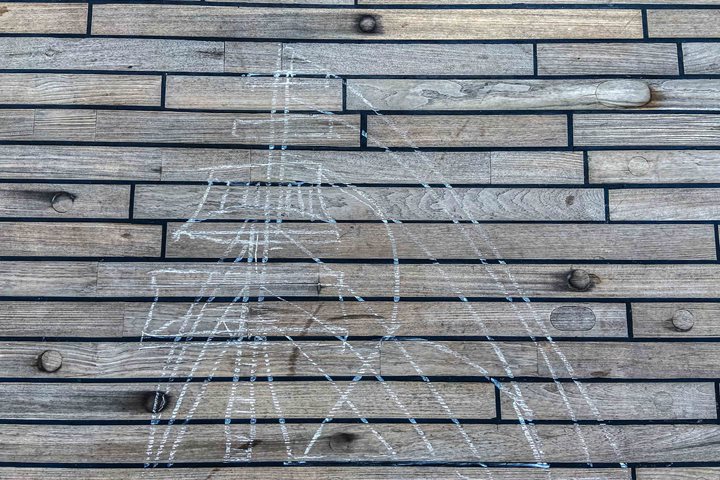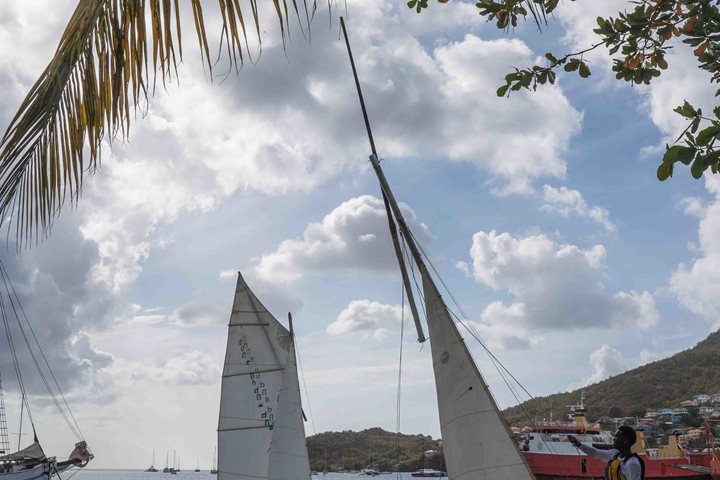Happy Leap Day! The brilliant yellow Caribbean sun rose at 6:25 a.m., and we motored out of our docking in Bridgetown, Barbados, at about 9:30 a.m. and began our journey west towards St. Lucia and Dominica. Before we sail away from the beautiful island of Barbados, here is a brief sketch of its history: the original name given by the Arawak (the native inhabitants who arrived here from South America ca. 800 C.E.) for the island of Barbados is Ichirougaiam, which means the “island with the white teeth,” a reference to the coral reefs surrounding the island and the difficulty of getting a canoe through the reefs. The current name comes from the Portuguese word barbados for “bearded ones” and likely stems from the name the navigators gave to the dangling roots of the fig tree. Though the Portuguese sailed here in 1536, the island is essentially English, owing to the English immigrants who arrived here in 1625 and stayed.
Tom O’Brien presented an identification of the sails from the Spanker Deck as the crew went aloft to set sails for our first sailing day. We were making 5 to 7 knots overnight, rolling with a soft, slow fetch, like the gentle rocking motion of a hammock. Imagine a ship 36 feet long, displacing 2,600 tons, moving effortlessly under wind power alone at 8 miles an hour. Our sails, made in Poland, are of a very durable synthetic material and have an average life of about five years. Sea Cloud’s 30 sails carry 32,000 square feet of sail. Although built in 1931, original owner E.F. Hutton had it designed to reflect the apogee of square-riggers of the 1880s.
Staff introductions were followed by Alex’s short introduction to photography in the tropics. Striped dolphins were spotted swimming along the bow wave. These wonderful marine mammals can get quite big, with males growing to almost 9 feet and weighing in at 350 pounds and females a tad smaller at 8 feet and 330 pounds. They are consummate swimmers.
We enjoyed our first scrumptious lunch served al fresco on the Lido Deck. Later in the day, Tom Heffernan gave a talk on the history of slavery and how the great wealth generated by cane sugar farming led to the exploitation of Africans in the Americas. Approximately 12 million Africans, chiefly from West Africa and Congo, were sold into slavery in the West Indies and the continental U.S. from the 1540s till 1807 in the English colonies and almost until 1882 in Spanish Cuba.
We sailed by the UNESCO World Heritage site of Gros and Petit Piton (meaning “large and small peaks”) a little before 5 p.m.–spectacular against the azure sky and deep blue sea. Simon, our hotel manager, provided local piton beer and flaky cheese rolls.
Tonight, we had a fine Captain’s welcome dinner, where he introduced us to some of his senior officers. Roman entertained as always with his inimitable talent on the piano. Tomorrow we anchor in Prince Rupert Bay, Dominica.









